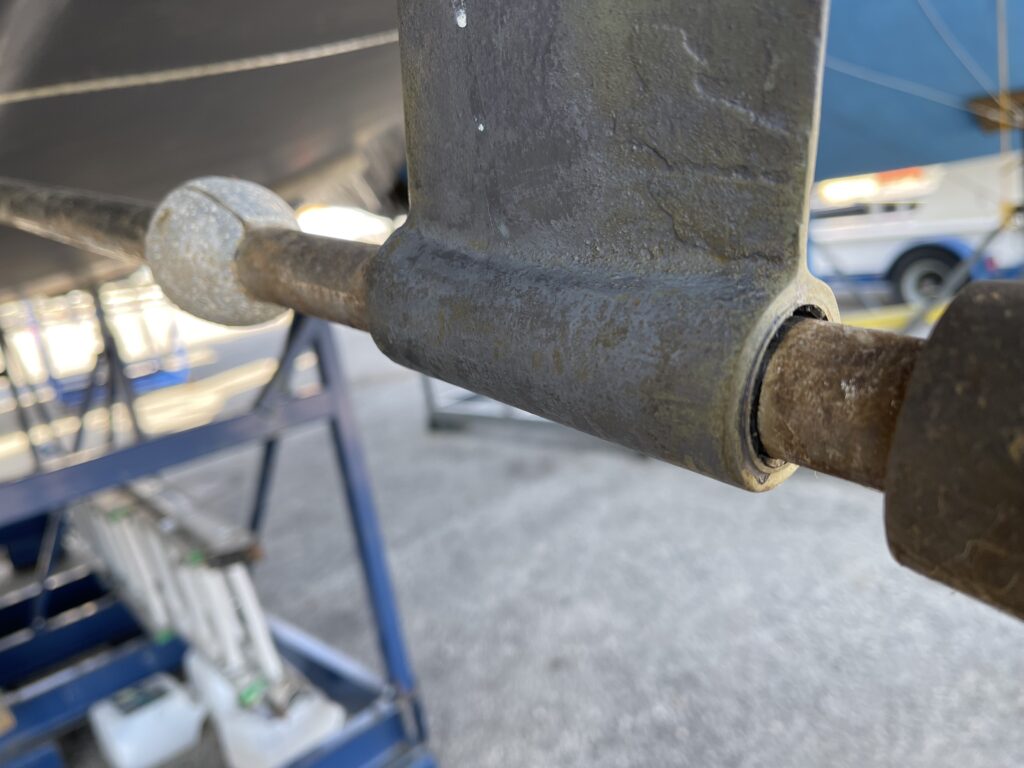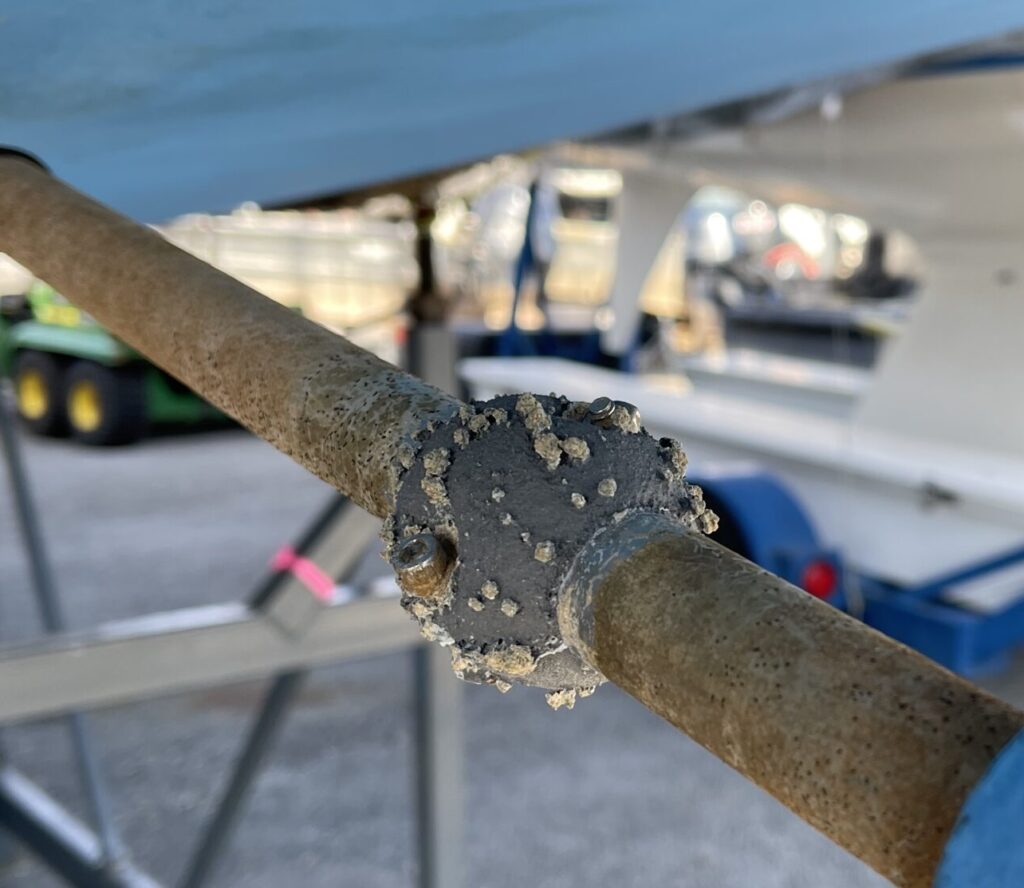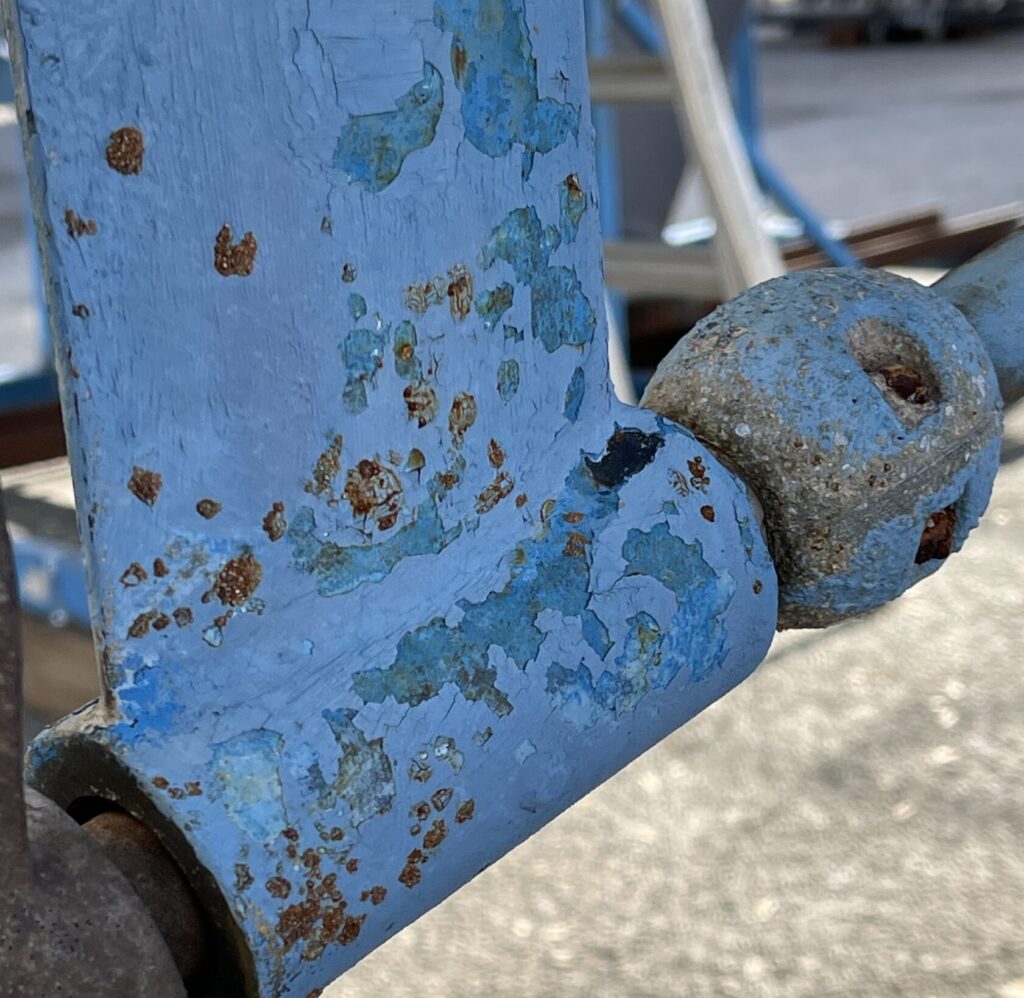Story by Harris & Ellis / April 3, 2024

Author: David Harris
On those days when Mother Nature tempts us back to the boatyard with warm snow-free days, get a jump on your spring to-do list. Walk around the hull and check out some areas below the waterline. Here are three common wear points to watch.
1. Your steering system, whether sail or power (except outdrives or jet drives), is dependent on a properly maintained rudder assembly. Over time and use, the rudder bearings and mounts can become worn and result in a loose or sloppy feel to the helm. Checking for “play” in the rudder is a matter of determining the amount of movement within the rudder tube or bearings. Hold the rudder firmly at the lower portion and see how much fore-and-aft and side-to-side movement you can produce. Slight “wobble” is normal, but more than ½-inch to ¾-inch of movement warrants further investigation.
Several rudder systems exist, but generally they all use a rudder tube to house the rudder shaft, a retaining nut or pin to secure the rudder in the boat, or pintles and gudgeons to secure it to a skeg and a steering system, i.e. tiller or wheel or cable. All these components are possible culprits contributing to excessive play and may require a professional inspection. I once lost a rudder while under sail, and it’s not a situation I recommend!
2. While you’re under the boat, check the sacrificial anode on the shaft or outdrive. This replaceable part is designed to corrode instead of your shaft or prop or outdrive. When more than 30 per cent of it has dissolved, it should be replaced. Magnesium anodes are recommended for freshwater use; zinc for saltwater because the alloy is less resistant to saltwater’s electrolytes. Your chandler or mechanic can help you with this.
3. On shaft drive systems, a cutlass bearing is used to hold the propeller shaft in line with the outlet from the hull in a propeller bracket or strut. The rubber lining of this bearing will wear with use and is designed to be replaced. Again the wiggle test is useful. If you can move the shaft from side to side within the bearing, it likely needs replacement.
—Dave Harris


